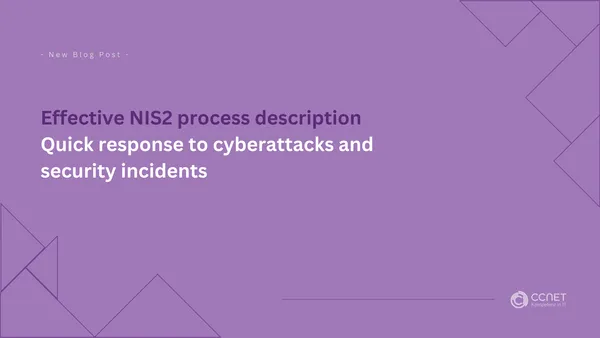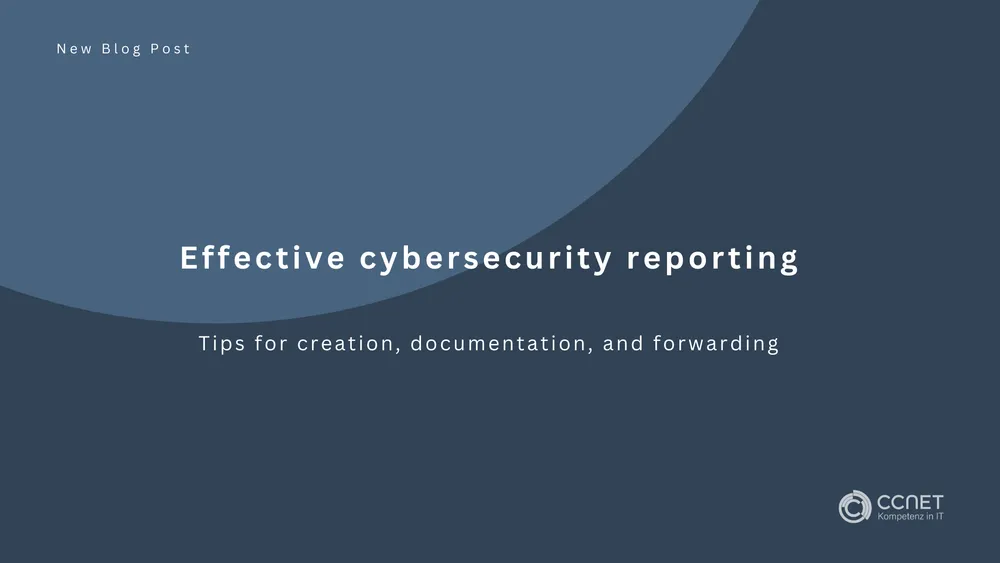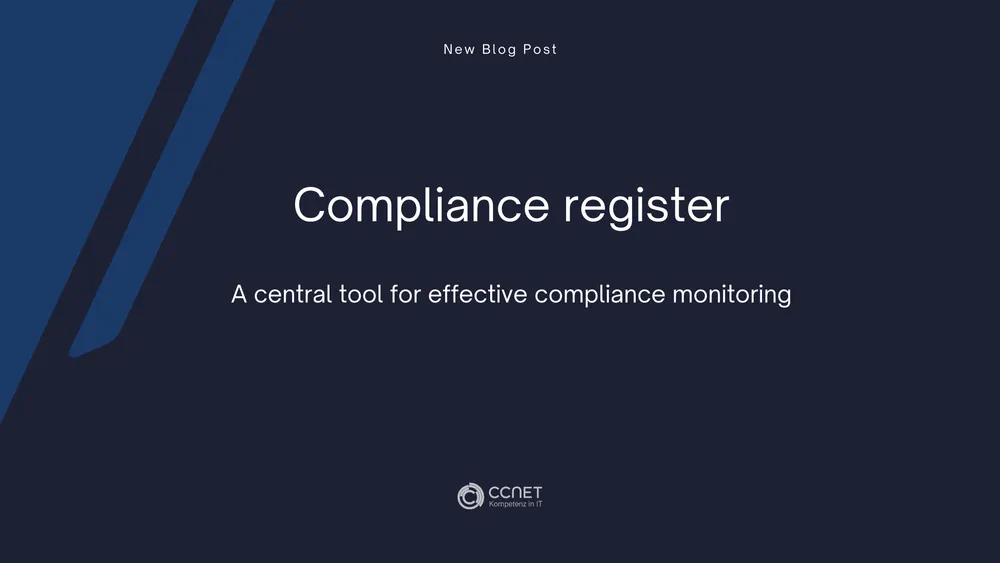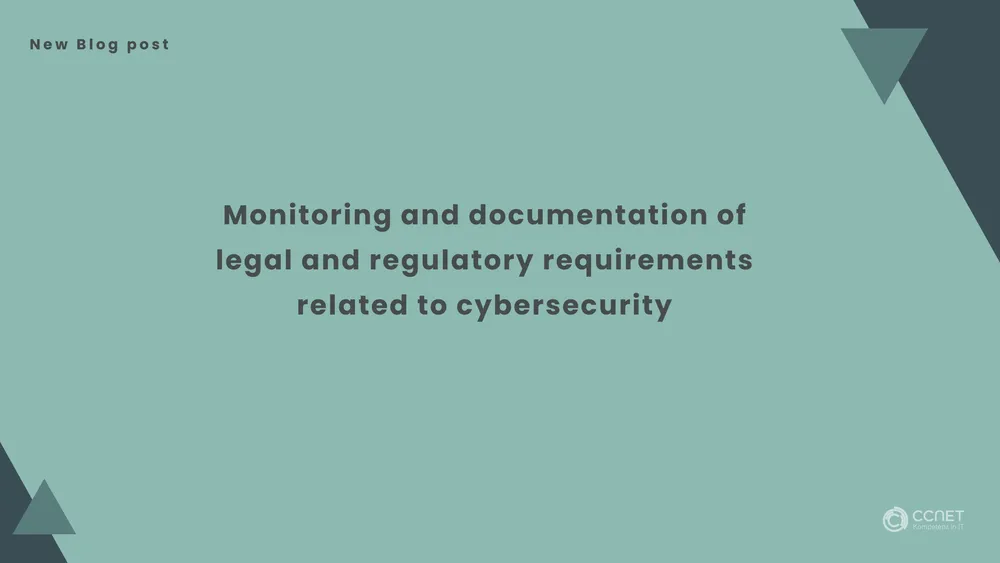
CCNet
Jan 29, 2025 • 2 min read

Effective NIS2 process description: Quick response to cyberattacks and security incidents
Goal of the Process
This process aims to ensure that a company has clear, predefined Incident Response Protocols that are immediately activated in the event of a cyberattack or security incident. Through a structured approach, the goal is to minimize damage and secure system integrity.
Scope of the Process
The process applies to all IT systems, networks, applications, and data within the company. It includes all types of cyberattacks and security incidents that require an immediate response.
Process Flow
Definition and Creation of Incident Response Protocols
The IT security officer develops detailed protocols tailored to potential risks and threats. These protocols include clear escalation levels and the assignment of responsibilities for different incident types.
Activation Upon Detection of an Incident
Once the SIEM system or other monitoring tools detect a security incident, the corresponding protocol is automatically activated. The IT security officer informs the Incident Response Team, which immediately begins the response.
Escalation Levels and Responsibility Assignment
Depending on the severity of the incident, a graduated escalation protocol is applied. While minor incidents are resolved internally, more severe incidents escalate to management. Each escalation level has its own responsibilities and defined measures.
Immediate Containment Measures
The Incident Response Team immediately takes action to contain the incident, preventing further spread. This can include isolating affected systems, blocking user accounts, or disabling certain network access points.
Analysis and Resolution
In close collaboration with the IT team, the Incident Response Team conducts a deep analysis of the incident to identify causes and vulnerabilities. The next steps involve fixing the security gap, removing malware, and restoring affected systems.
Communication During the Incident
The communications manager ensures that all relevant stakeholders, such as management, affected departments, and possibly external partners, are promptly informed about the incident. Transparent communication helps avoid uncertainty and maintains the trust of the affected parties.
Recovery and Verification
After the resolution, system integrity is checked, and all IT systems are returned to normal operation. A full system check ensures that no further threats exist and all systems are functioning correctly.
Documentation and Final Report
The IT security officer documents all actions taken and creates a detailed final report that outlines the incident’s progress, responses, and measures taken. Additionally, recommendations for preventing similar incidents are formulated.
Post-Incident Review and Lessons Learned
A post-incident meeting serves to analyze and assess the response. Improvement opportunities are identified, and insights gained are used to continuously optimize the Incident Response Protocols.
Responsibilities
- IT Security Officer: Develops and monitors the protocols, coordinates the Incident Response Team, and manages communication with management.
- Incident Response Team: Responsible for the immediate response, containment, analysis, and resolution of security incidents.
- Communications Manager: Responsible for internal and external communication during an incident.
- IT Team: Supports the technical implementation of containment and recovery measures.
Reporting
Reports on all responses to security incidents are regularly presented to management. These reports include an analysis of the incidents, assessments of the actions taken, and recommendations for future security strategies.
Continuous Improvement
The Incident Response Protocols are regularly evaluated and continuously adjusted to prepare for new threats and scenarios. This ensures an effective response to future incidents.
Conclusion
A well-structured process for quick response to cyberattacks and security incidents is essential for companies to effectively address threats and minimize damage. Clearly defined escalation levels and responsibilities ensure that incidents are quickly recognized and handled appropriately. Through comprehensive protocols, transparent communication, and thorough post-incident reviews, the company can not only respond to incidents but also continuously improve its security measures. Regular reviews and adjustments of the Incident Response Protocols ensure continuous adaptation to new threats, enabling a strong and future-ready cyber defense, as outlined in the description of the company's security strategy.


